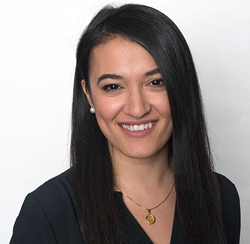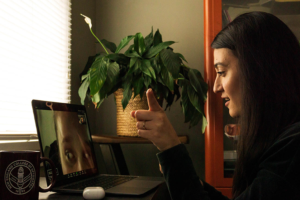| This is part of a three-part series on NECO telemedicine. Read the rest of the stories here. |
Contact Lenses


“The device requires a computer and a cell phone to take the visual acuity. I send a fairly long list that explain how to register for the app, complete the contact lens history form and describe their comfort with their contact lenses at different times of day,” she says. The app has the patient fill in wearing and replacement schedules, too. Dr. Gulmiri sends instructions on how the patient should take photos of the lens on their eye before the session so she can make an asynchronous assessment.
She’s found that for established patients, there are many functions of the follow-up visits that could be done by telemedicine. “Asking a patient how the lenses are feeling is something I can do by telemedicine. I can still see their eyes and have that conversation without inconveniencing them to come into the office. I can see a kind of hybrid consultation schedule, with telemedicine in between office visits,” she says. “Patients also understand that telemedicine isn’t a replacement for the office visit. If she sees something that looks unusual, she’ll have a reason to call the patient into the office.
For many contact lens patients, a video consult can provide good information. “When we teach students, we cover the three essentials: centration, coverage and movement. I can verify all three of those with a video consult.
SHORTENING THE ORTHO-K WAIT LIST
“I do a lot of myopia management with orthokeratology,” she says. Through the telemedicine platform, she can monitor those patients who are in the treatment protocol. “I will have them test their vision on a daily basis, and then they can email me their visual acuity results. I can monitor their vision progression via telehealth platforms without bringing them into the office,” she says.


For example, one of her earliest test patients was a 10-year-old girl. Dr. Gulmiri had her update the visual acuity information daily so that she could track the visual acuity daily. That actually provided her with more data than since daily visits to the office for orthoK monitoring are not typically necessary or warranted. “I was learning to use the app, and I wanted as much data as I could get,” she says.
With ortho-K patients, she can look generally at the movement of the lens on the eye, but without the dye, there are limitations to what she can assess. However, being able to work with patients remotely in-between necessary office visits will allow the clinic to schedule more new patients starting with orthokeratology. That means shortening the waiting list and serving more patients.
PUSHING THE PLATFORM
She’s also testing how much she can do for her scleral lens patients. “I’m pushing the limits of the platform to see how far I can go. I’m trying to help my patient, but I also want to see how I can use it later on. Now, I have the time to devote to understanding the platform and thinking of ways it can be applicable.”
Like Nicole Ross, OD, MSc, FAAO, Dr. Gulmiri too has seen advantages of talking with patients in their homes. “I like to verify what patients are using, so being able to talk with them in their homes is helpful. I can ask what contact lens solution they’re using, and they can say, ‘Hold on, let me go get it.’ I can verify their powers because they can show me their blister packs. It helps to affirm that they’re really wearing what we’ve prescribed.”
The future will likely include a combination of in-person and telemedicine visits. “Now that I have a taste of it, I know it’s here to stay.”



